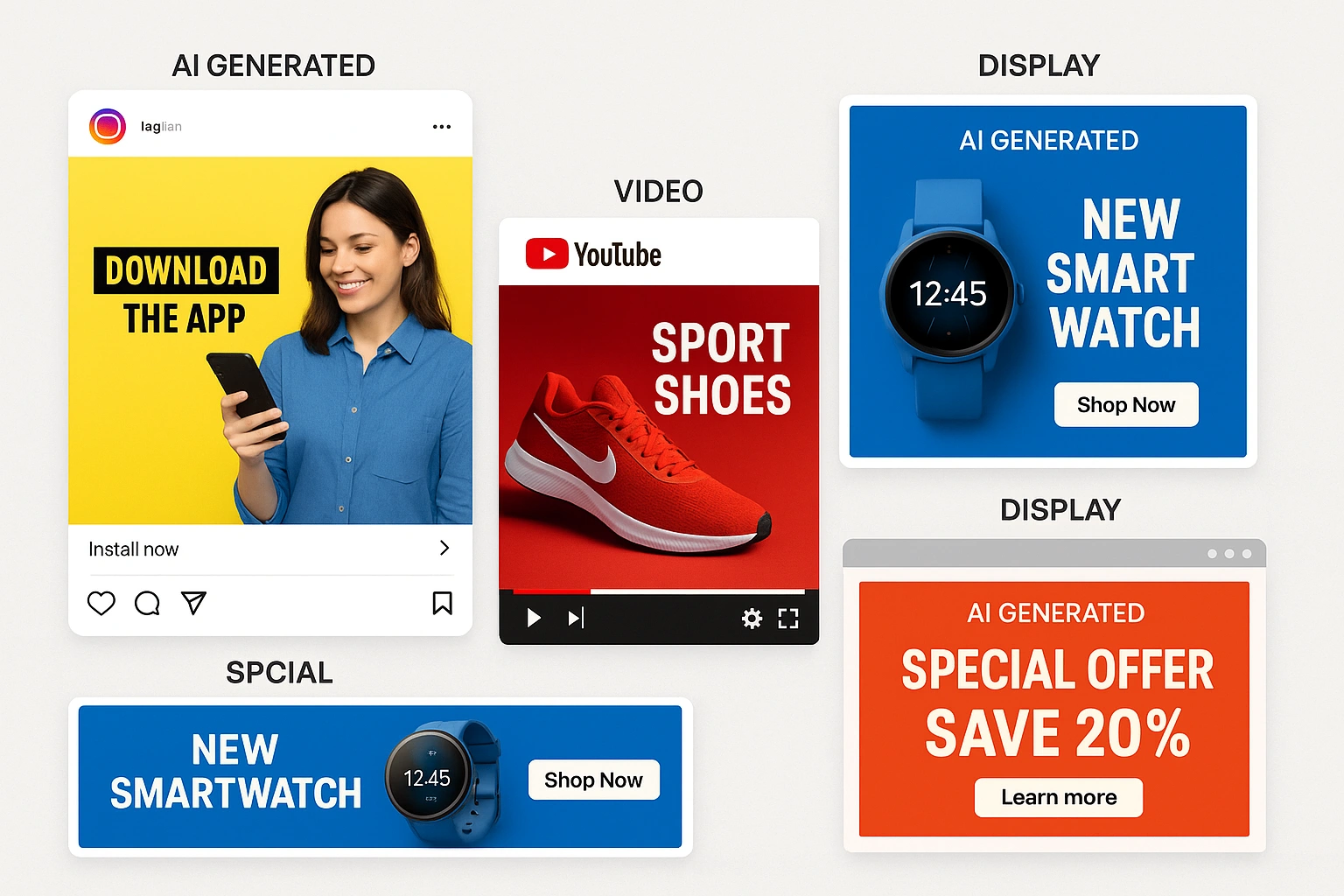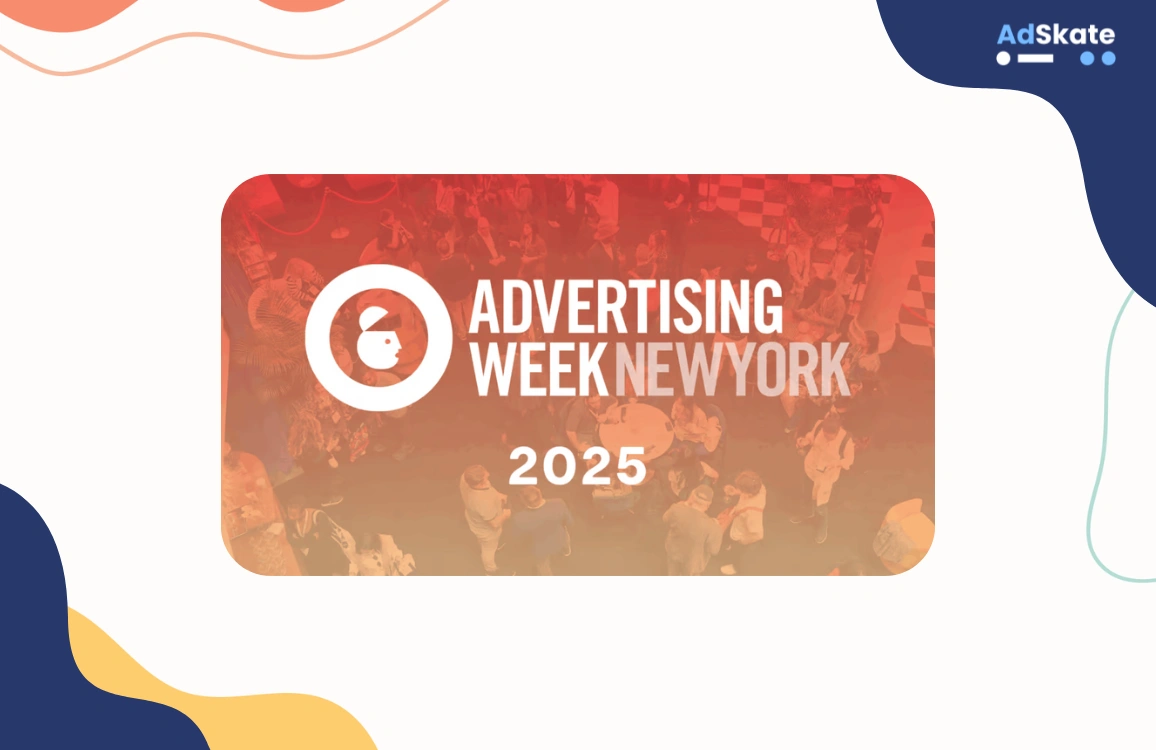Creative Trends 2025: The Rise of AI, Authenticity, and Volume-Driven Strategy
.webp)
Listen to the podcast version:
Introduction
Advertising in 2025 is unrecognizable compared to just five years ago. What once required months of planning, large production budgets, and limited creative variations can now be done in days, sometimes hours, thanks to AI-driven tools. But while technology is accelerating, consumer expectations are shifting even faster. Authenticity, humor, and creative agility are becoming non-negotiable.
The brands winning today are those that recognize these shifts early and embrace them fully. This article explores the five biggest creative trends shaping advertising in 2025: the rise of AI-driven creative, the return of authenticity, the resurgence of humor, the necessity of creative volume, and the power of omnichannel orchestration.
Trend 1: AI-Driven Creative Takes Center Stage
Artificial intelligence has moved from novelty to necessity in the creative process. In 2024 alone, adoption of generative AI tools grew by a huge margin, transforming how brands conceptualize, design, and test ads.
AI is no longer just about generating copy or images. It’s about creating entire campaigns tailored to micro-segments of audiences. Tools now allow brands to:
- Generate multiple ad variations in minutes
- Adapt creative for different platforms seamlessly
- Test messaging pre-launch using predictive analytics
Example: A global streaming service uses AI to generate hundreds of ad versions promoting different shows, each personalized by genre, audience segment, and platform. Instead of one-size-fits-all, every creative was optimized for its intended viewer.

AI-driven creative is not about replacing human creativity, but enhancing it. Marketers now use AI to handle scale and optimization, freeing creative teams to focus on storytelling and strategy.
(Source: Deloitte Digital Marketing Trends 2025)
Trend 2: Authenticity is the New Currency
While AI is booming, consumers are also demanding authenticity like never before. Overly polished, high-production ads can feel unrelatable, especially to Gen Z and younger millennials.
This is why lo-fi creative and UGC-inspired content have taken off. Ads that look and feel like organic posts are outperforming traditional creative on platforms like TikTok, Instagram, and YouTube Shorts.
Key drivers of authenticity in 2025:
- Relatable storytelling over glossy perfection
- Real voices and faces instead of stock imagery
- Transparency around AI use in content creation
Example: A consumer tech brand launched a campaign featuring real customers filming themselves using products, contrasted against traditional polished ads. The authentic content delivered higher engagement and drove stronger brand trust.
The lesson? Authenticity and AI are not at odds. The best campaigns use AI for scale but maintain a human core.
Trend 3: The Comedy Comeback
After years of serious, cause-driven advertising, humor is making a comeback. In a world filled with tension, humor cuts through noise, lightens the mood, and fosters connection.
Brands are embracing playful, witty, and even absurd campaigns to stand out. Short-form platforms have amplified this, as humor naturally thrives in bite-sized content.
Example: A DTC food brand uses self-deprecating humor to highlight customer frustrations in a campaign. The ads quickly went viral, generating strong brand recall and increased sales.
Risks remain: humor can misfire if not aligned with audience values. But for brands that execute it thoughtfully, humor is proving to be one of the most effective creative levers in 2025.
Trend 4: The Volume Era – Scaling Creative Like Never Before
The days of producing 3–5 variations of an ad are over. Brands are now producing dozens, even hundreds, of creative variations per campaign.
This shift is driven by three factors:
- Fragmentation of audiences across platforms
- The need for real-time optimization
- AI’s ability to automate creative generation
Example: A retail brand tested 50+ variations of a single campaign across different channels. By running them simultaneously, they identified top-performing ads within days and reallocated budget for maximum efficiency.
.webp)
This is the “volume era” of creative strategy. Instead of striving for one perfect ad, marketers are focused on generating many good ads, testing them quickly, and scaling the winners.
Trend 5: Omnichannel + AI = Consistency and Scale
Consistency across platforms is no longer optional. Consumers move fluidly between social, web, TV, and physical retail. Brands that deliver a cohesive experience across all channels are winning attention and loyalty.
AI is now enabling true omnichannel orchestration by:
- Repurposing creative into platform-specific formats
- Ensuring brand voice consistency across touchpoints
- Automating personalization at scale
Example: A global beverage company launched an omnichannel campaign where AI adapted the same core creative for YouTube, TikTok, OTT, and digital OOH, ensuring both consistency and contextual relevance.
Omnichannel strategies powered by AI not only improve efficiency but also allow marketers to connect more meaningfully with audiences wherever they are.
(Source: Deloitte Digital Marketing Trends 2025)
How Marketers Can Prepare for 2025 and Beyond
These trends are not optional, they are the reality of modern advertising. To prepare, marketers should:
- Adopt AI tools for creative generation and testing
- Prioritize authenticity by leaning on relatable, lo-fi creative
- Experiment with humor where it fits your brand voice
- Build creative at scale, aiming for dozens of variations per campaign
- Commit to omnichannel consistency, ensuring seamless experiences across touchpoints
The mindset shift is clear: it’s no longer about creating the “perfect” ad. It’s about creating at scale, testing quickly, and doubling down on what resonates.
Conclusion
The creative landscape of 2025 is defined by speed, authenticity, and adaptability. AI is fueling creative scale, authenticity is driving trust, humor is making ads relatable again, and omnichannel orchestration is keeping brands consistent in an increasingly fragmented world.
Marketers who embrace these shifts, rather than resist them, will set themselves apart. Creativity in 2025 is not about doing more of the same. It’s about leaning into change, experimenting boldly, and connecting with audiences in smarter, more human ways.
Ready to see how these trends can elevate your campaigns? Try AdSkate today and unlock the power of creative analytics, pre-campaign testing, and synthetic audiences to stay ahead in 2025 and beyond.
.webp)
.webp)
.webp)
.webp)
.webp)
